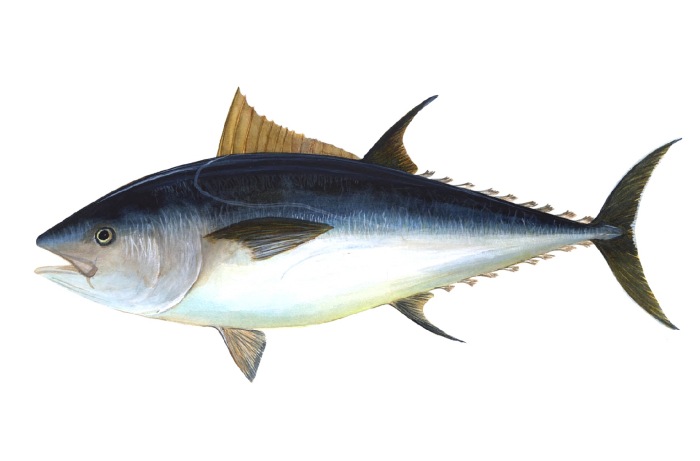- Teleostomi
Taxobox
name = Teleostomi
fossil_range = LatestOrdovician - Recent

image_width = 230px
image_caption = TheNorthern bluefin tuna
regnum =Animal ia
phylum = Chordata
subphylum = Vertebrata
infraphylum =Gnathostomata
unranked_classis = Teleostomi
unranked_classis_authority = C. L. Bonaparte,1836
subdivision_ranks = Classes and Clades
subdivision =Acanthodii Euteleostomi
*Osteichthyes
**Actinopterygii
**Sarcopterygii
*Tetrapod aTeleostomi is aclade of jawed vertebrates that includes thetetrapod s, bony fish, and the wholly extinct acanthodian fish. Key characters of this group include an operculum and a single pair of respiratory openings, features which were lost or modified in some later representatives. The teleostomes include all jawed vertebrates except the chondrichthyans and theplacodermi .The clade Teleostomi should not be confused with the similar-sounding fish clade
Teleostei .Taxonomy and phylogeny
Subphylum
Vertebrata ├─(unranked)Gnathostomatomorpha └─InfraphylumGnathostomata ├─ClassPlacodermi - "extinct" (armored gnathostomes) └MicrophylumEugnathostomata (true jawed vertebrates) ├─ClassChondrichthyes (cartilaginous fish) └─(unranked)Teleostomi (Acanthodii & Osteichthyes) ├─ClassAcanthodii - "extinct" ("spiny sharks") ├SuperclassOsteichthyes (bony fish) ├ ├─ClassActinopterygii (ray-finned fish) ├ └─ClassSarcopterygii (lobe-finned fish) └SuperclassTetrapoda ├─Class Amphibia (amphibians) └(unranked)Amniote (amniotic egg) ├─Class Sauropsida (reptiles or sauropsids) ├ └─Class Aves (birds) └─ClassSynapsid └─ClassMammal ia (mammals) Note: lines show evolutionary relationships.Origins
The origins of the teleostomes are obscure, but their first known fossils are Acanthodians ("spiny sharks") from the Late
Ordovician Period. Living teleostomes constitute the cladeEuteleostomi , which includes all osteichthyans and tetrapods. Even after the acanthodians perished at the end of thePermian , their euteleostome relatives flourished such that today they comprise 99% of living vertebrate species.Physical characteristics
Teleostomes have two major adaptations that relate to
aquatic respiration . First, the early teleostomes probably had some type of operculum, however, it was not the one-piece affair of livingfish . The development of a single respiratory opening seems to have been an important step. The second adaptation, the teleostomes also developed agas bladder and the ability to use some atmosphericoxygen , if primarily forbuoyancy , very early on. The primary function of the bladder is keeping the fish at neutral buoyancy. Later these swim bladders will evolve and modify intolung s, as intetrapod s.fact|date=June 2007Acanthodians share with Actinopterygii the characteristic of three
otolith s, the sagitta in the sacculus, the asteriscus in the lagena, and the lapillus in the utriculus. In dipnoans there are only two otoliths and in "Latimeria" there is only one.cite book | title = Fishes of the World | last = Nelson | first = Joseph, S. | publisher = John Wiley & Sons, Inc. | year = 2006 | id = ISBN 0471250317]ee also
*
Acanthodii
*Euteleostomi References
Wikimedia Foundation. 2010.
